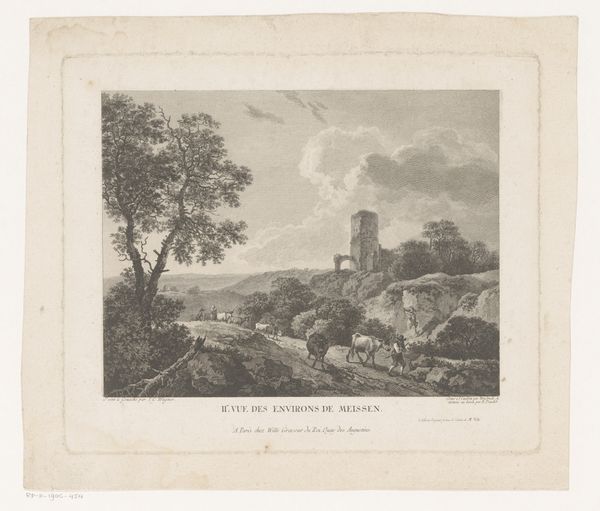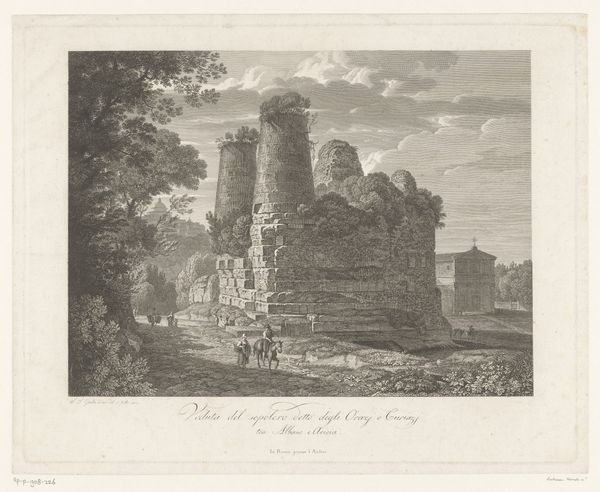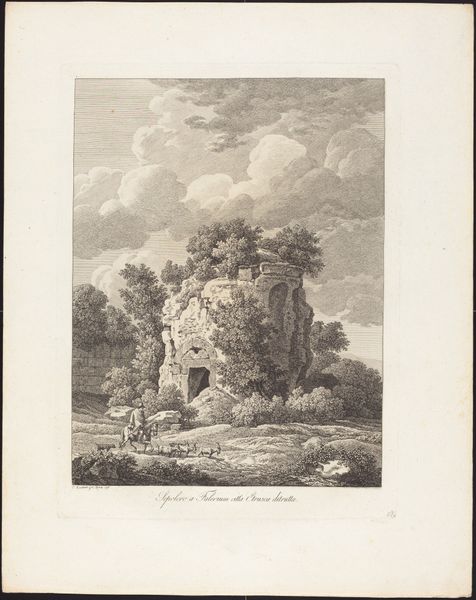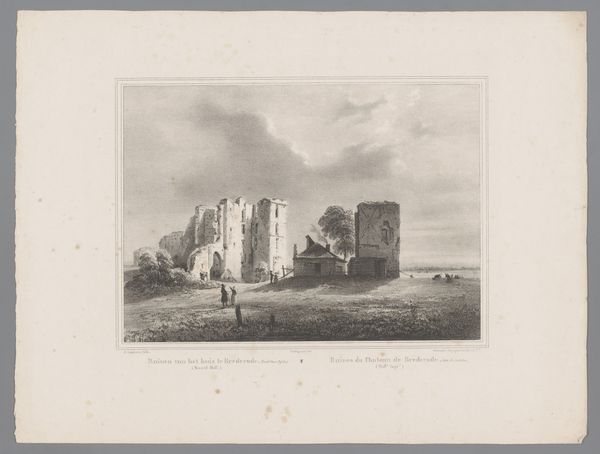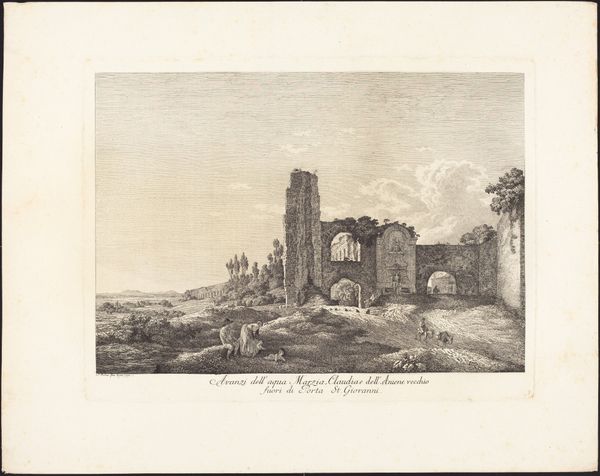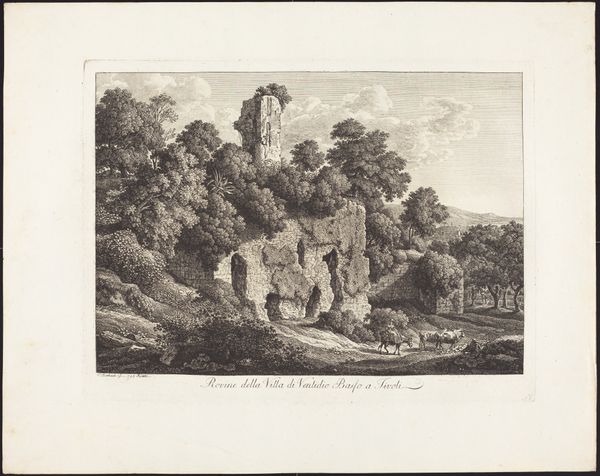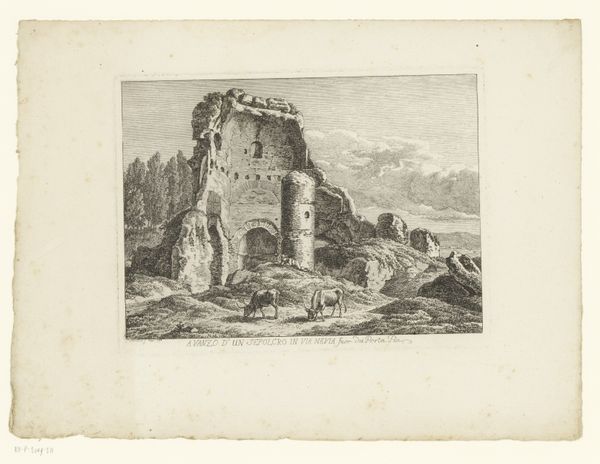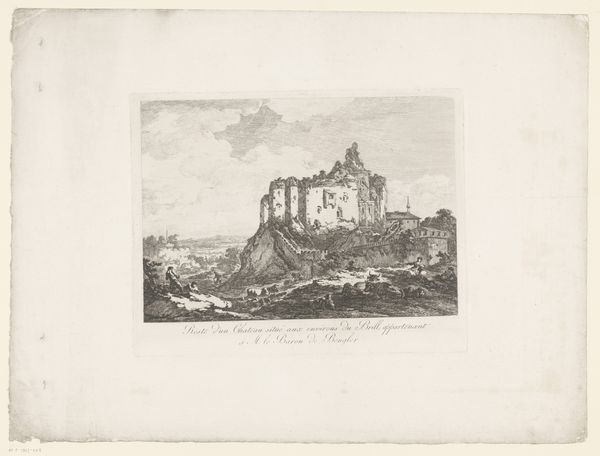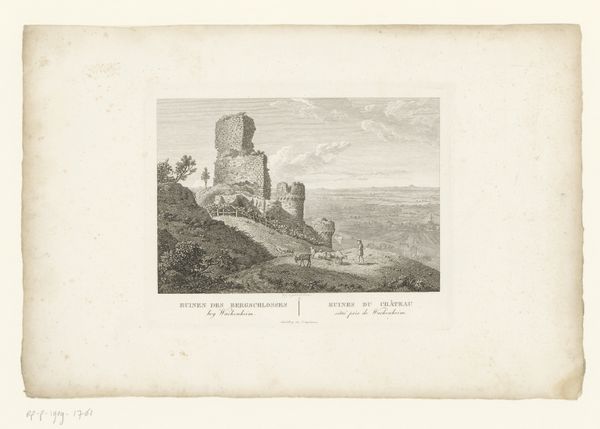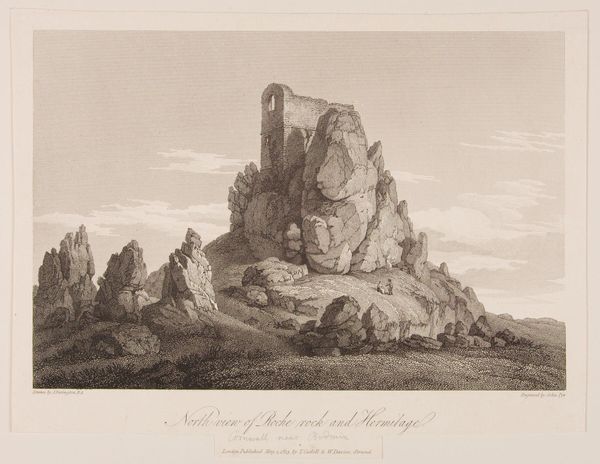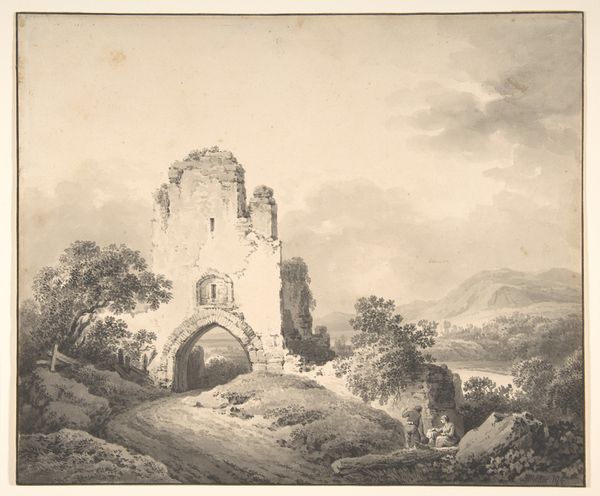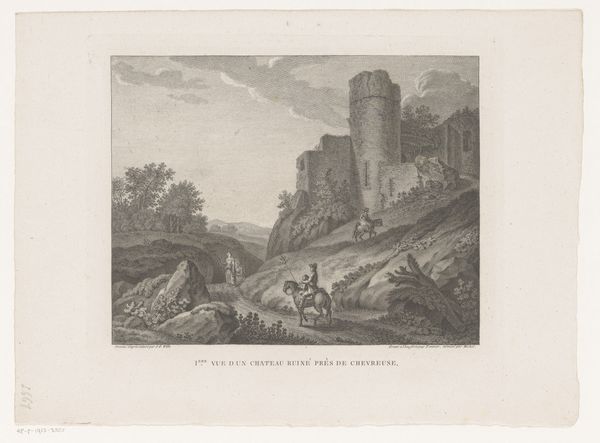
#
yellowing
#
picture layout
#
aged paper
#
yellowing background
#
photo restoration
#
parchment
#
light coloured
#
archive photography
#
historical photography
#
old-timey
Dimensions: height 308 mm, width 358 mm
Copyright: Rijks Museum: Open Domain
Jean Pelletier created this etching, "Landschap met herders en kudde," which translates to "Landscape with Shepherds and Herd," sometime in the 18th century. The print depicts an idealized pastoral scene, one which reflects the romanticized views of rural life prevalent among the French aristocracy before the revolution. The crumbling architecture is juxtaposed with grazing animals and figures, evoking themes of nature reclaiming civilization. This was a common trope, but it also subtly speaks to the social structures of the time. The shepherds represent an innocence and simplicity that was often contrasted with the perceived corruption of urban life. Consider how Pelletier, as an artist working in the service of the elite, both reinforced and perhaps subtly questioned these social hierarchies. What emotions do you think the artist wanted to evoke from the viewer? How might the experience of viewing this artwork shifted for audiences before and after the French Revolution?
Comments
No comments
Be the first to comment and join the conversation on the ultimate creative platform.
